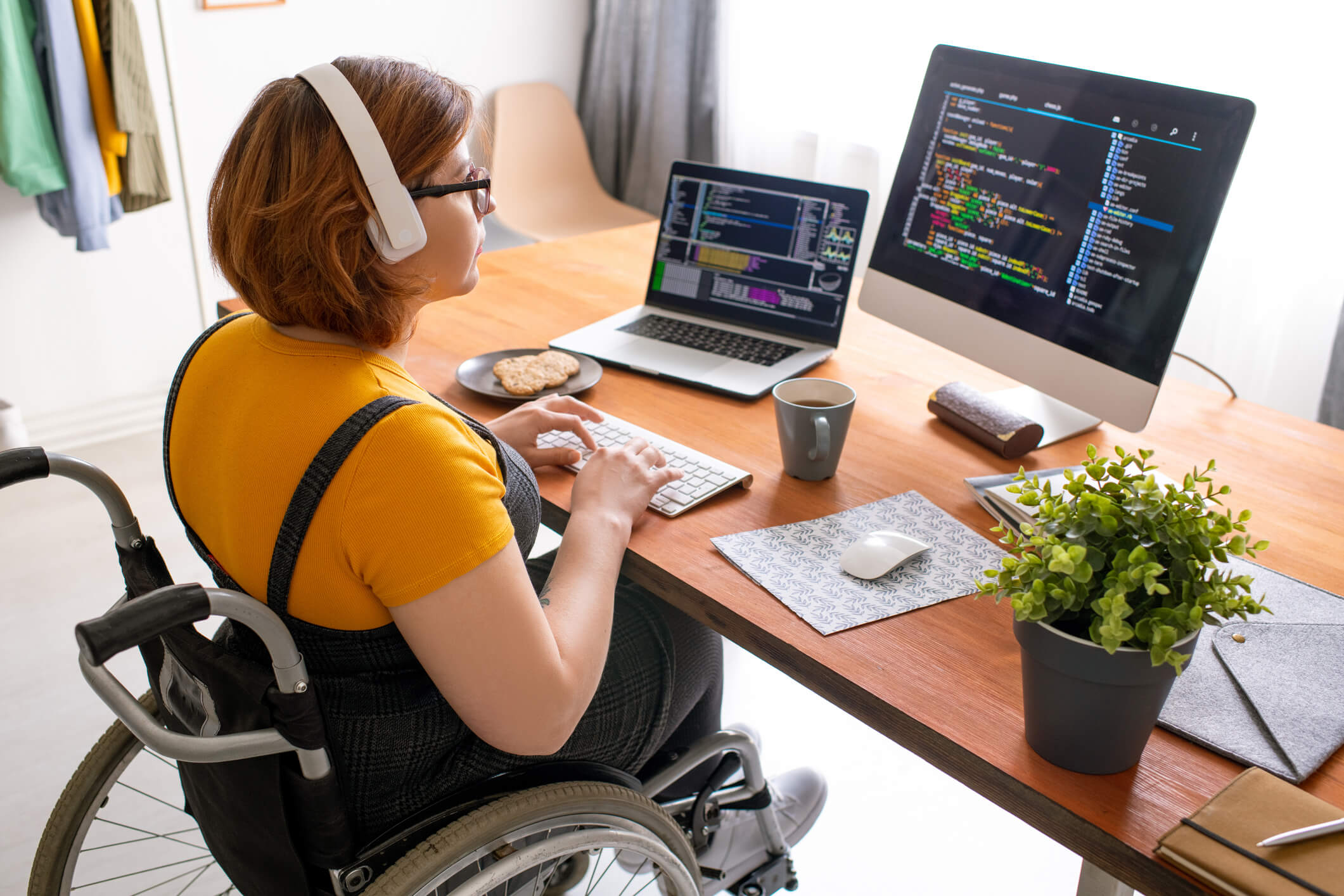October is National Disability Employment Awareness Month (NDEAM), a time that particularly hits home for me as a young blind working professional. Individuals with disabilities have much to offer companies and businesses regarding their creativity, adaptability, and tendency to think outside the box. Unfortunately, so many members of the disability community struggle to find steady and gainful employment.
One reason for this is the outdated belief many employers still hold—that workers with disabilities can’t perform at a high enough level to contribute meaningfully to the company’s goals. This way of thinking is not only wrong but also based on misconceptions. With the right tools and accommodations to level the playing field, people with disabilities can be excellent employees. They can be just as productive, if not more so, than their peers.
Another big challenge we face is technology. Digital accessibility challenges often make it impossible for disabled employees to have a fair chance at completing work tasks satisfactorily. In the remainder of this blog, I will discuss some digital accessibility-related challenges that I and many others have faced in the workplace that contribute to productivity struggles and an inability to complete specific tasks. While my discussion specifically pertains to screen readers and visual impairment, the principles can apply to other disabilities.
Document Accessibility
One area notorious for causing accessibility issues is document manipulation. Documents such as PDFs, text files, images, sound or video files, and memos are involved in daily business operations across many industries. Unfortunately, some long-standing practices, like image-based PDFs, still undermine accessibility.
For example, PDFs created through image scans of physical documents are unreadable by screen readers and, therefore, useless to blind individuals. A visually impaired friend works at a company where the head secretary combines handwritten notes with printed information, scanning them into an image-based PDF inaccessible to screen reader users.
Recommendation: To ensure accessibility, any text-based material should be digitized using manual text entry. Images or scans will not work with screen readers unless they have been run through Optical Character Recognition (OCR) software. For images in documents, always include descriptive alt text to ensure accessibility for visual impairment.
Use of Non-Cross-Platform Software
Another frustrating challenge is when companies rely on software that is not cross-compatible with different operating systems and screen readers. Screen reader users develop preferences based on the operating systems and tools they are most comfortable with, and different screen readers handle specific tasks better than others.
For instance, I’ve personally had to learn a new screen reader on the spot because of software compatibility issues, which threw off my productivity. Flexibility is key for blind professionals who rely on screen readers—it often takes a lot of trial and error to figure out the best setup and allows us to be as productive as possible.
Recommendation: When selecting software, it’s important to choose cross-compatible tools, like email clients and calendar managers, that let employees with disabilities stick with what works for them. This kind of flexibility can improve productivity and adaptability in the workplace.
Reliance on Outdated Equipment or Software
Surprisingly, many companies still operate with technology from five or ten years ago, which can create significant accessibility barriers. Software updates frequently include accessibility improvements, and running outdated versions means that workers with disabilities may be forced to work around barriers that have already been resolved.
I encountered this issue firsthand when I was assigned a Mac computer at my college job, running a version of macOS two years behind. The older software had known accessibility bugs fixed in the current version. Working with outdated software significantly decreased my efficiency.
Recommendation: Always ensure that your company’s devices and software are up to date. Even better, employees with disabilities can use their personal devices for work tasks. These devices are likely already configured with the necessary accessibility settings, allowing for a smoother and more productive work experience.
The Importance of National Disability Employment Awareness Month
NDEAM is the perfect time to consider how workplaces across all industries can improve to better accommodate individuals with disabilities. Workers with disabilities are just as capable as non-disabled workers and offer a unique perspective that can lead to more innovative and diverse business operations.
This month is the perfect time for companies to examine their accessibility practices—whether digital tools or physical spaces—and start real conversations about creating a more inclusive work environment. Hiring and supporting employees with disabilities isn’t just the right thing to do; it can give businesses a competitive edge.
Take the Next Step Toward an Accessible Workplace
Creating an inclusive workplace for employees with disabilities is crucial for fostering productivity and compliance. As regulations like the European Accessibility Act (EAA) come into play, it's important to ensure your business is prepared ahead of the June 2025 deadline.
Want to learn what your business needs to do for EAA compliance? Join our European Accessibility Act (EAA) webinar for expert insights and a clear roadmap to meet the new standards. Register here to secure your spot!
Editor's Note: Our frequent contributor, Michael Taylor, wrote this post. This post reflects his opinions and experiences. Read more about Michael and some other posts on his experience online here.







